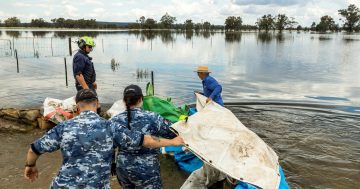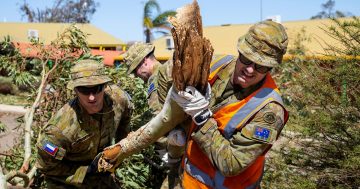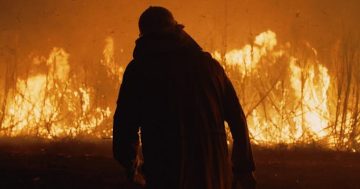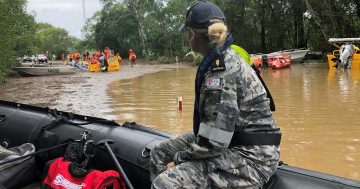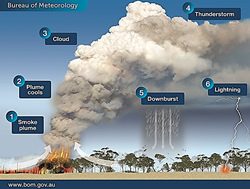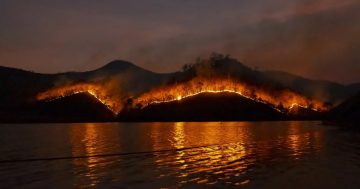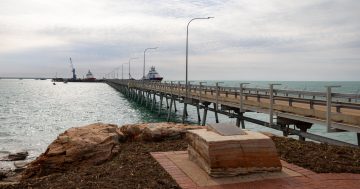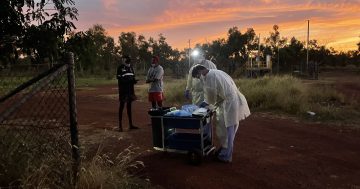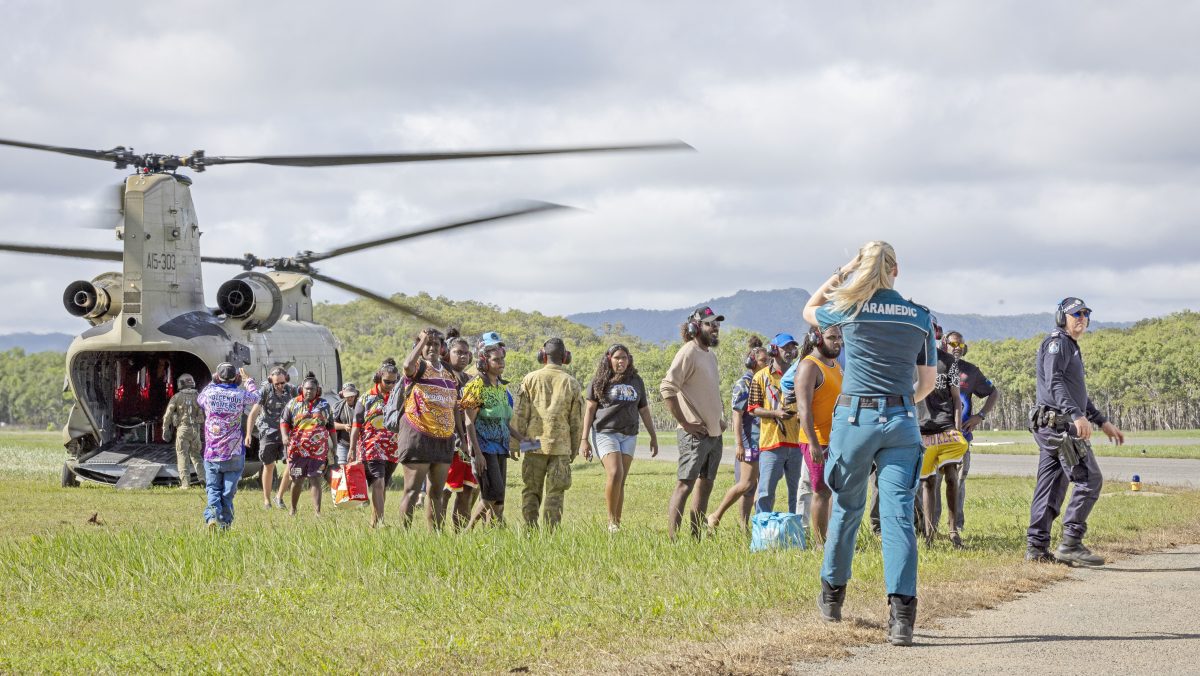
Army personnel from the 5th Aviation Regiment, Queensland Police and Emergency Services assisted residents in evacuating from Wujal Wujal to Cooktown on 21 December 2023. Photo: Cape York Weekly.
It’s January 2024 and once again members of the Australian Defence Force are supporting state emergency services in the aftermath of a natural disaster – this time in Queensland, following severe storms and flooding.
And as always, the local communities, emergency services, and the politicians are outspoken in their praise for this support. The professionalism, compassion and responsiveness of ADF personnel are the hallmarks of our Defence Force. But as Australia’s geostrategic environment becomes more unstable and natural disasters become more frequent and concurrent, is this historic reliance on the ADF for disaster relief undermining our resilience as a nation? Is it potentially weakening our military preparedness by diverting resources? Is it masking gaps in civil society that need to be addressed?
Admiral (Ret) Chris Barrie, a former Chief of the Defence Force, has warned against complacency in natural disaster recovery planning, saying Army troops cannot keep being deployed to fire or flood zones and has raised concerns about a “huge gap” in the resources needed to combat increasingly extreme weather events. He said deploying the military was “the most expensive way to put people on the ground” and called on the government to better engage local communities in disaster planning.
As a society, there is a tendency to see Defence and First Responders as complementary, compatible and, in some instances, even interchangeable. But is this the case?
Could we expect those trained to fight fires or manage civil emergencies to turn their hand with minimal training (if any) to operate even a small number of Defence systems or capabilities? Clearly not. However, our community, grateful for the presence of the Defence Force during emergencies, has no concerns nor faces any dilemma in making a broad leap to employing Defence personnel in civil first response roles for which they are neither trained nor equipped.
We cannot build our resilience as a nation and society if we do not know where the gaps are because of our ever-increasing use of Defence to undertake tasks above and beyond its remit. The gaps and deficiencies in civil society will not be identified and, therefore, never rectified, and consequently, we will continue to fail to prepare.
The statement by the chair of the Royal Commission into Natural Disaster Arrangements that “unprecedented is not a reason to be unprepared” is loaded with criticism of the status quo when it comes to disaster preparation, management and mitigation. Yet it also opens the door on an ‘unprecedented’ opportunity for Australia to shift from a perpetual cycle of reaction to one of foresight, planning, cross-sector cooperation and, ultimately, genuine preparedness for the disasters (natural and man-made) that lie ahead.
With planning and preparation, the role of First Responders and Defence during periods of disaster could be re-shaped to contribute more effectively and be fit for purpose for the 21st century – a bit like creating a parallel organisation to the ADF Reserves, but for civil society.
Interestingly, we wouldn’t be starting from scratch with such a concept as there are international examples of civil ‘defence’/support organisations that could provide a template for Australia to better prepare for, respond to, and build resilience to the looming national and international, and natural and made-made crises ahead of us.
But why would we want to introduce another layer of process to our response to natural disasters?
The Australian spirit of mateship and our rallying together in times of crisis is legendary. We have a proud history of volunteerism to support local communities, both on a day-to-day basis and at times of crisis, such as Surf Life Saving, State Emergency Services and Rural Fire Services. However, this reliance on the goodwill of the population cannot succeed when crises are concurrent and a large number of the population are all suffering the consequences of the crisis at the same time.
As commendable as hyper-local response actions are, they do not build resilience and are certainly not sustainable. Unfortunately, local humanitarian responses tend to be lauded by the media and politicians as examples of the resilience of Australians when, in fact, what they reflect is a systemic failure of national resilience planning.
Australia, Australian communities and Australian governments need to undertake formal crisis preparation within a national resilience framework as a matter of urgency.
More information about this topic can be found in the IIER-A report First Responders and Defence in Australia – Resilience in the Face of Climate Change.
Air Vice-Marshal John Blackburn AO (Ret) is the chair of the Institute for Integrated Economic Research-Australia and also a consultant in the field of defence and national security. He is a Fellow of the Royal Society of NSW, the Institute For Regional Security, the Sir Richard Williams Foundation and the Australian Institute of Energy.
Group Captain Anne Borzycki (Retd) is the Director at the Institute for Integrated Economic Research Australia Ltd. She is currently working in the field of national resilience and supply chain vulnerability as they relate to national security.
Original Article published by Anne Borzycki on Riotact.


